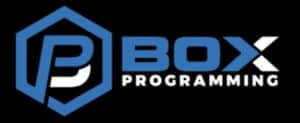When I first started coaching CrossFit classes I was like a young kid with ADHD; I wanted to give my clients every.single.cue in hopes they’d transform into Rich Froning from my magical coaching! Of course, this did not happen.
My wife would often look at me like I had 9 heads when we were taking athletes through on-ramp. “Dude you just gave that lady 13 cues. C’mon man trim the fat a bit will ya!?”
I received the same feedback when I took my coaches prep course in 2011. Trim the fat.
My hopes for you is that if you suffer from the same affliction is that you can trim the fat from your coaching cues and facilitate better movement for your clients.
Today we have access to countless numbers of videos and online coaching information which is a blessing and a curse; the more you learn the more you want to be able to use it to enhance your coaching as well as improve your athlete’s performance.
With that said, it’s easy to try to give your athletes too much information and actually impede their progress with a particular movement. So what is the right amount of cues we should give to an athlete to ensure they are staying safe and improving their movement patterns?
Having a set of mental checkpoints may help you when you’re coaching, but before we consider trying to give our athletes specific cues it’s important to start with the most important aspects of performing any movement first.
Safety
Is performing a certain movement in a particular way going to risk your clients’ health? If so, then the best course of action may be discontinuing this movement and subbing an alternative movement.
These cases are usually those that have no specific cue that is going to change the current pattern. Typically, these situations present with more of a deficiency or limitation that will not allow for this movement to be performed correctly no matter what cues you use.
With that said, these situations are usually pretty obvious so don’t try to pull a rabbit out of your hat: sub a different movement that accomplishes the same goal but keeps your client safe.
Additionally, you may find it useful before actually discontinuing the movement to have the athlete attempt the movement with either bodyweight or a PVC pipe.
Show them exactly what you’re referring to so they may become more aware as to what is actually happening that is putting them at risk of injury.
The best course of action in these cases is to tell the client that you are concerned for their safety and would advise using a scaling option that will accomplish similar tasks.
They may not be thrilled to perform a different movement, but sometimes it’s easy to remind people that your goal is to increase their level of fitness without getting injured.
Here’s an example of a movement that fits what I’m referring to and movement that would not fit:
- Discontinue Movement: Your athlete has several faults occurring with the overhead squat at the same time eg. bar is internally rotating, ankles/knees cave-in during eccentric action and weight shifts to the toes. In this case, we have tried to make various corrections and no change has occurred. The movement does not improve even when the athlete uses a PVC. For many folks this is not uncommon, especially those that are coming from an otherwise sedentary lifestyle.
- Keep Movement: The athlete has trouble keeping their elbows up and can only go down to parallel with the front squat. In this case, the athlete faults have improved with coaching, but the depth remains the same. We’d most likely have the athlete perform their front squat sets with the load that allows them to improve their current level proficiency or add a box varying the height so they can work on their depth while focusing on maintaining their elbow positioning.
Triage Method
Address the most glaring issue FIRST, but also address an issue that is an “easy fix”. We want to build confidence and although we’d like to fix multiple issues all at once, for some this isn’t reasonable.
After giving your athlete their cue, allow them to focus on this one cue alone before addressing other issues. Attempting to fix multiple aspects of their movement at once can actually bring about new issues so keeping your cue concise is important.
As long as there isn’t an inherent risk, start off with one cue and one cue only. As we know, everyone learns at different rates, but sometimes it’s necessary to put yourself in the athletes’ shoes and remember when you were first learning a particular movement.
What worked for you? What didn’t work for you?
Does being bombarded with 5 cues all at once sound like an appropriate way to learn effectively? For most, probably not.
There are always exceptions to the rule and we’ve had those clients that learn fast and are able to pick up everything you’re putting down, but that certainly isn’t the norm.
After you’ve come back to your athlete reinforce what you’ve already told them and then give 1-2 additional cues. These 1-2 cues should be connected making them easier to remember/execute.
To give you an example, many times when an athletes hips rise early in the Snatch, it’s a combination of a few things. If this is the case, giving 1-2 cues that address one issue may be needed.
On the other hand, if this same athlete’s hips are rising early in the Snatch and I told them to, “keep your chest, drive your knees out while being patient on the first pull, but aggressive with the second/third pull,” they’d likely think I’m an asshole for thinking they understand everything I just said =)
The same thing can be said by simply eliminating the generic cues such as “keep your chest up, drive your knees out, be aggressive second and third pull.”
By generic I mean, these will not have the same meaning to an everyday athlete that has little experience with the snatch as it would to a seasoned CrossFit athlete.
Keeping your direction simple and concise will not only help your athlete execute the movement better, but will also save your time to be able to provide more coaching to your athletes in your class.
Overall, complex movements may have more areas that require additional cues. Stick to the “Triage Method” and you’ll be sure to see your athletes moving better as well as being more receptive to your coaching.
Remember, less is more sometimes with cues, as it is with many other things in training. You don’t have to throw the kitchen sink at your athletes right out of the gate.
Facilitate a quick change and allow your athletes to dissect the information you’ve given them and you’ll find yourself to be a much more effective coach.



